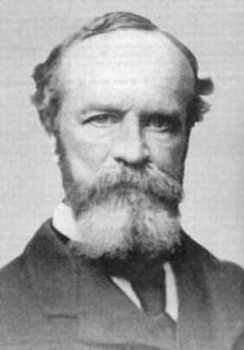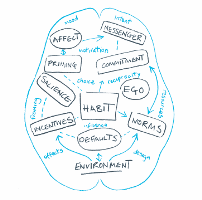Recent years have seen psychologists, neuroscientists and behavioural economists converging on a ‘dual process’ model of decision making. While the precise formulation varies across disciplines, the gist of dual process models is that individuals use two different types of cognitive process, also interpreted as two distinct systems (or sets of systems) within the brain, when they make choices:
 While such ideas are often associated with cutting edge neuroscience and behavioural economics, they can be traced back to the very beginnings of both psychology and economics. More than a century ago William James, widely considered the ‘father’ of modern psychology, suggested that there were two different kinds of reasoning (which he called ‘associative’ and ‘true’ reasoning – see James, 1890). Further back still, in 1758, Adam Smith (the ‘father’ of economics) wrote that an individuals’ behaviour was determined by a struggle between what he called the ‘passions’ and the ‘impartial spectator’ (Smith, 1759).
While such ideas are often associated with cutting edge neuroscience and behavioural economics, they can be traced back to the very beginnings of both psychology and economics. More than a century ago William James, widely considered the ‘father’ of modern psychology, suggested that there were two different kinds of reasoning (which he called ‘associative’ and ‘true’ reasoning – see James, 1890). Further back still, in 1758, Adam Smith (the ‘father’ of economics) wrote that an individuals’ behaviour was determined by a struggle between what he called the ‘passions’ and the ‘impartial spectator’ (Smith, 1759).
Dual process theories of behaviour are found in social, personality, cognitive, and clinical psychology (see Chaiken & Trope, 1999; Evans, 2008; Slovic et al., 2002; for surveys). In the economic arena, behavioural economists have started importing these insights from psychology and neuroscience, creating novel ‘dual self’ decision making models (see e.g. Fudenberg & Levine, 2006, Loewenstein, 2004, O’Donoghue & Rabin, 1999). These models typically view individuals as being composed of two ‘selves’ – one a patient long term ‘planner’ (akin to Smith’s ‘impartial spectator’), the other an impulsive, impatient ‘doer'.
These two distinct systems suggest two very different routes to changing behaviour: interventions that aim to change cognitions (e.g., incentives, beliefs or goals), and interventions that change the context (environment or situation) within which the person acts. Where individuals are making decisions using ‘reflective’ processes, providing them with additional information, or changing the incentives they face, may well be enough to change their behaviour. Where they are, instead, relying on ‘automatic’ processes in making their decisions, providing information or additional incentives may have little or no effect.
 From classroom behaviour to teenage risk-taking, from school choices to teacher recruitment, there are numerous areas in which we, and the Department, wish to understand (and perhaps change) people’s behaviour. In each of these areas, therefore, we will first seek to identify what decision making processes are driving current patterns of behaviour. To what extent are individuals acting as standard ‘maximisers of self-interest’ (using reflective processes)? To what extent is there evidence 9 for some ‘failure’ of rationality (due to some automatic ‘bias’)? And where there is evidence of rationality failure, does it affect all individuals and groups equally, or some more than others?
From classroom behaviour to teenage risk-taking, from school choices to teacher recruitment, there are numerous areas in which we, and the Department, wish to understand (and perhaps change) people’s behaviour. In each of these areas, therefore, we will first seek to identify what decision making processes are driving current patterns of behaviour. To what extent are individuals acting as standard ‘maximisers of self-interest’ (using reflective processes)? To what extent is there evidence 9 for some ‘failure’ of rationality (due to some automatic ‘bias’)? And where there is evidence of rationality failure, does it affect all individuals and groups equally, or some more than others?
In assessing the processes underlying behaviour, we will draw on the extensive economic and psychological literature identifying systematic ‘biases’ in individuals’ decision making. Research has shown that choice architecture – the way choices are presented to individuals – can strongly influence the decisions they eventually make. This research is clearly highly relevant to areas such as students’ choice of courses, parents’ choice of schools and children’s choice of food. Our centre proposes a range of projects in all three of these areas.
The ‘dual self’ literature also investigates the extent to which individuals exhibit a taste for immediate gratification, over-riding their longer-term goals (such as losing weight, or doing well at school). It is argued that individuals are continually tempted by short-run benefits, at the cost of their long-run selves, and that individuals could be made better off by commitment devices to allow them to exert self-control, even if they are costly to the individual concerned. Again this has clear relevance to areas such as diet, exercise, and positive behaviours, as well as drug-taking and other risky behaviours. Again, our centre proposes a range of evidence reviews and research projects in all of these areas.